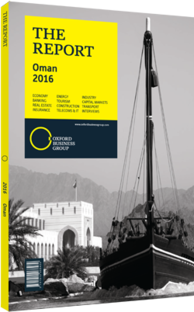New investments to transform Oman's downstream gas sector
Two forthcoming infrastructure investments are set to substantially broaden the Omani downstream gas sector, creating opportunities for new export markets and new domestic industries. The two projects, which will see an estimated $3.6bn of investment, will be based at either end of the country. The first, a liquefied petroleum gas plant to be located in the port town of Salalah, will have a capacity to produce 327,000 tonnes of natural gas derivatives per year, including 153,000 tonnes of propane, 115,000 tonnes of butane and 59,000 tonnes of light condensate.
The second project will be located further north at Fahud. The natural gas liquids plant will produce the feedstock for Oman Oil Refineries and Petrochemicals Company’s ambitious Liwa Plastics Industrial Complex, to be located at the port of Sohar’s industrial area. The liquids will be transported through a 300-km pipeline and serve a petrochemicals facility with a production capacity of 900,000 tonnes per year of polyethylene and 300,000 tonnes per year of polypropylene.
Diversification Efforts
Both projects have been in the works for several years and are part of a broader strategy to diversify Oman’s mid and downstream oil and gas sector, with the aim of increasing the amount of value retained within the sultanate from its hydrocarbons abundance. Both of these projects are scheduled to come on-line by late 2018, by which point Oman should be beginning to benefit from first gas at BP’s Khazzan-Makarem tight gas development.
The Khazzan tight gas project is one of the British multinational’s most significant greenfield investments. It aims to produce up to 28.3m cu metres of natural gas per day by sinking some 300 wells to depths of up to 4500 metres, and then making use of unconventional techniques such as hydraulic fracturing to release the gas. BP and its partner, Oman Oil Company Exploration and Production, are investing some $16bn in the project, which is predicted to increase Oman’s total gas production by between one-fifth and one-quarter.
Demand Drivers
The additional capacity to be provided by Khazzan is a sine qua non for the emergence of a downstream gas sector in the sultanate. As it currently stands, despite significant efforts to maintain (or even increase) capacity from existing fields, gas supplies are struggling to keep pace with demand. According to provisional official figures, Oman produced a total of 37.7bn cu metres of gas in 2014, down 3.6% from 39.1bn cu metres in 2013.
This production must service demand from the utilities sector of 7.9bn cu metres per year (currently rising by 7.8% year-on-year), industrial demand of 21.9bn cu metres and export commitments in the form of long-term liquefied natural gas (LNG) contracts, which in 2014 totalled 7.95m tonnes – the equivalent of 10.8bn cu metres. As a result, Oman currently imports gas, with recent media reports suggesting that the sultanate may even resort to importing LNG in the short term. The sultanate is also negotiating a $60bn, 15-year deal with Iran to receive some 28m cu metres of gas per day from its neighbour across the Gulf.
With no current spare capacity, and the government prioritising projects in power and water, it is clear that developments in the downstream sector will need to be coordinated with new gas production at sites such as Khazzan, not to mention a potential Iranian pipeline or regasification facilities. In the long term, the presence of a diversified downstream sector in the sultanate will provide a host of additional opportunities for investment and economic diversification – not least in areas such as processing and packaging, which are closely associated with the Ministry of Transport’s current drive to market Oman as a logistics centre.
You have reached the limit of premium articles you can view for free.
Choose from the options below to purchase print or digital editions of our Reports. You can also purchase a website subscription giving you unlimited access to all of our Reports online for 12 months.
If you have already purchased this Report or have a website subscription, please login to continue.

